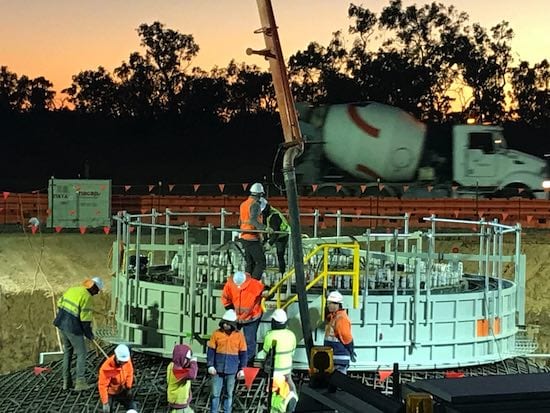
One of Australia’s leading renewable energy developers has declared that the industry would be better off with no National Energy Guarantee, rather than a NEG hobbled by a 26 per cent emissions reduction target that may not be able to be increased.
Roger Price, the CEO of Windlab, a listed company spun out of the CSIRO which is building the world’s first combined wind, solar and battery storage facility in north Queensland, says the industry is approaching a critical time amid the “craziness in Canberra” and as the final details of the NEG are drafted.
In a speech delivered in Sydney on Wednesday, before the shockwaves from Canberra as the entire Coalition voted in support of Pauline Hanson’s motion for a new coal-fired power generator, Price said that the renewable energy industry had a difficult choice.
“Among our industry, there is a view that the NEG is an architecture or mechanism that we can work with, that it is the fourth-best solution, but it is possibly workable,” Price said at the Large Scale Solar and Storage conference co-hosted by RenewEconomy and Informa.
“There seems to be a notion in business that maybe we can take a two-step approach to this … approve the mechanism and then hope that some future government can improve the emissions target and make it all OK.
“We know what happens if the emissions target is 26 per cent … we will have to find something else to do, and it will be a disaster for the economy generally in many ways … and we won’t reduce emissions from transport and agriculture without very significant economic impacts.
“It’s a bit of a joke. If it stays at 26 per cent, a lot of things are stuffed up.
“The notion that we can have this mechanism and just hope that a future government will increase the emission reduction target is incredibly fraught with danger.
“It’s not any easy decision to make, but what I’d encourage you all to think about is, if given choice of a NEG with 26 per cent, or no NEG, choose no NEG. You should be calling your state ministers to tell them exactly that.”
There appears to be considerable division within the renewable energy industry about exactly that point – with some insisting that the emphasis be put on the scope of emissions reduction targets, and others on the design of the mechanism, on the hope that the government will change.
Numerous studies have shown that the current 26 per cent emissions reduction target for the electricity sector will be all but met by 2020, or soon after, thanks to the RET, and the likely closure of Liddell.
That means that the NEG will give no signal for any new generation. And it is not yet clear that any future government will be able to change it, and the Coalition is seeking to lock in its target until 2030.
The Smart Energy Council has been one of the most critical opponents, and on Wednesday used the Coalition’s decision to vote, en masse, in support of Hanson’s motion for new coal-fired power stations in the Senate, as an example.
“This is the straw that broke the camel’s back,” chief executive John Grimes said in a statement.
“When it boils down to it, the National Energy Guarantee is all about locking in coal and locking out renewables.
“If there was even the faintest shadow of doubt over whether the National Energy Guarantee has been designed to prop up coal or not, that’s completely gone out the window now.
“State and territory governments must not hand a blank cheque to the coal polluters.
“This junk policy is actually worse than not having a new national policy because the current one from the states is better.
“The emissions reduction target of 26 per cent proposed in the draft design paper is lower than what will be achieved with the current build and investment in renewable energy.”
Price said that the falling cost of renewables meant that they could be a facilitator of economic development, particularly in regional areas where they could offer low energy costs.
Windlab has been behind many of the major wind developments in Australia, and while the first stage of the Kennedy wind park will be 40MW of wind, 15MW of solar and 4MWh of battery storage, there is potential for up to 2GW of capacity, given its huge wind solar resource.
“If I told people five years ago (that wind and solar would win out on economics versus fossil fuels) people would have told me that I was smoking dope. Now it is clear. It just requires a bit of big thinking, but that is rare in politics at the moment.”







